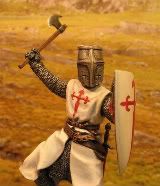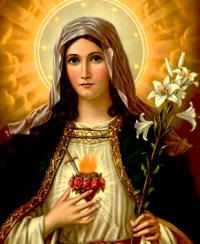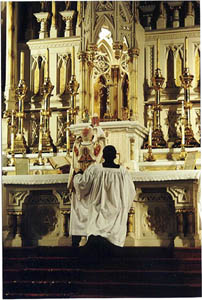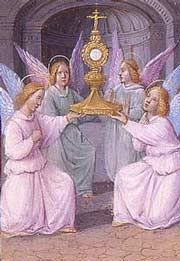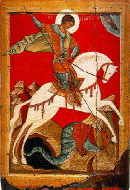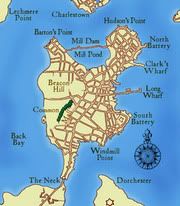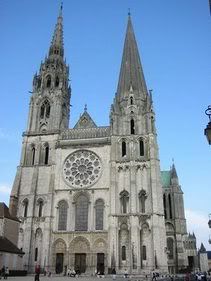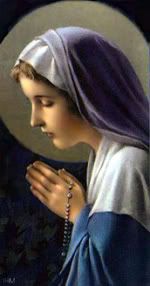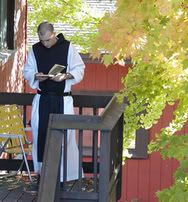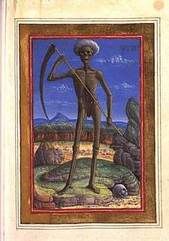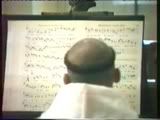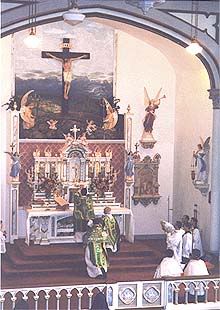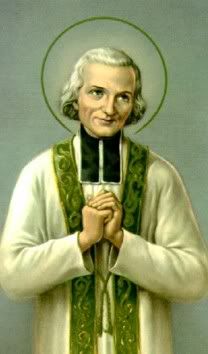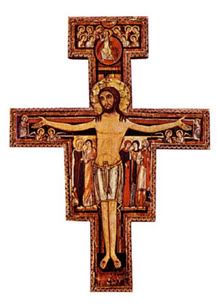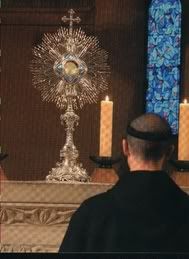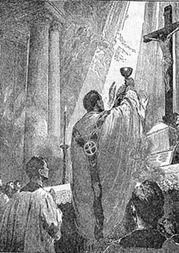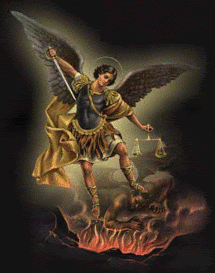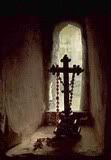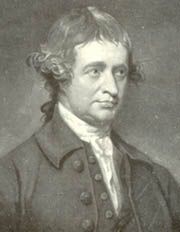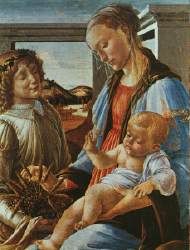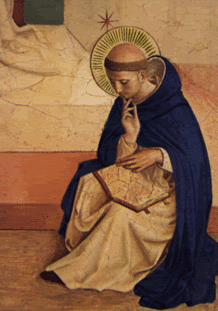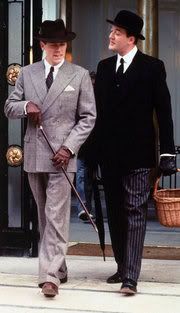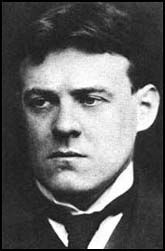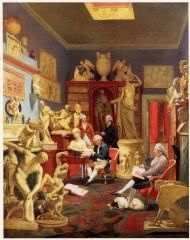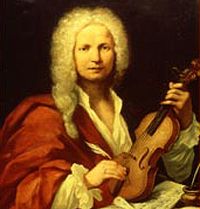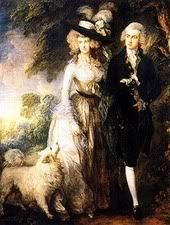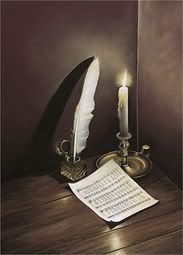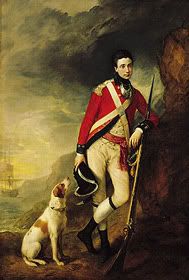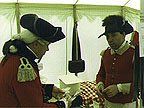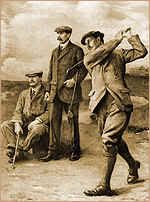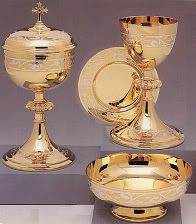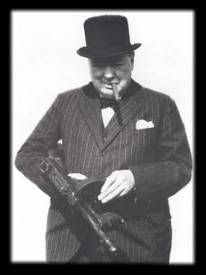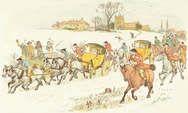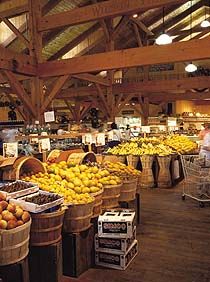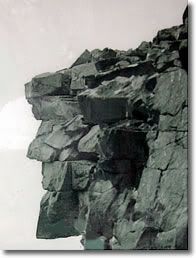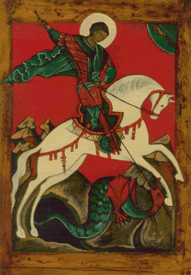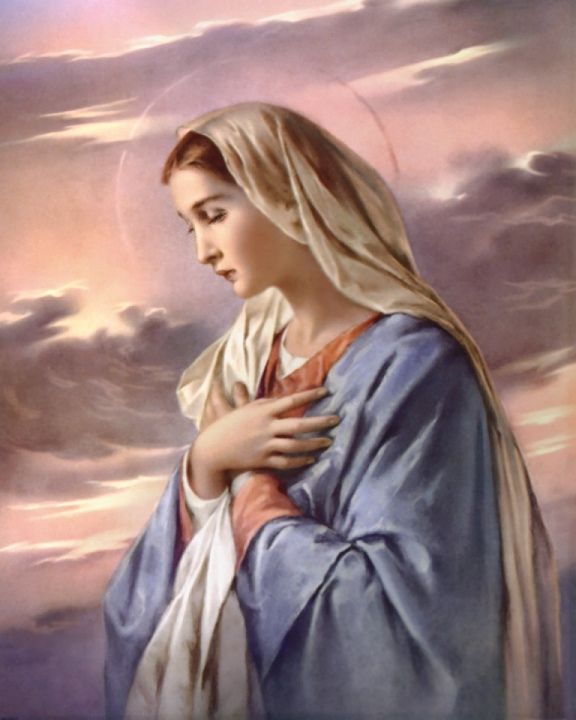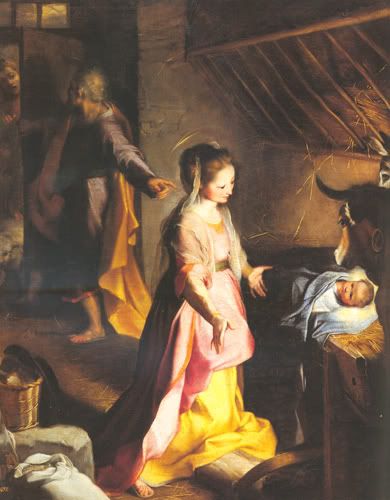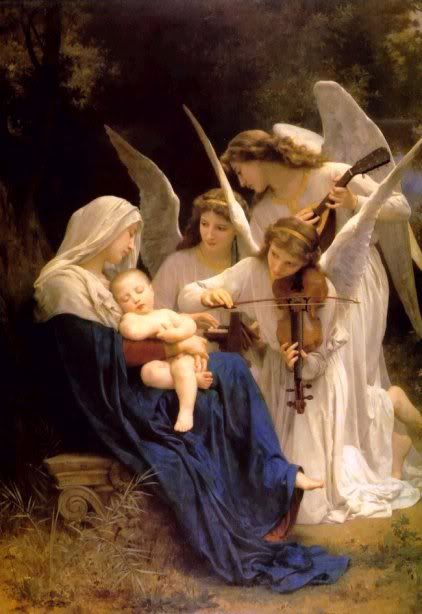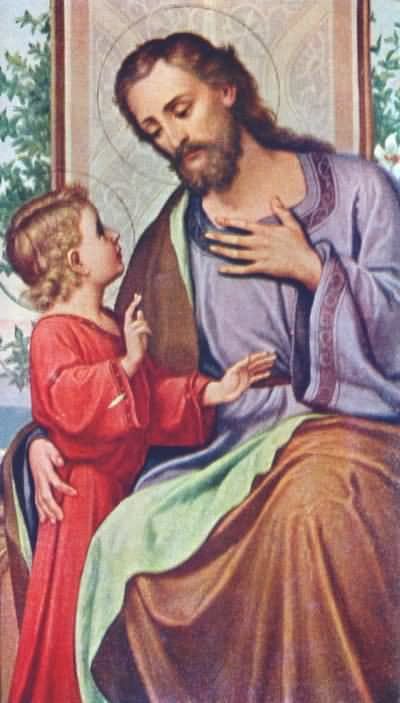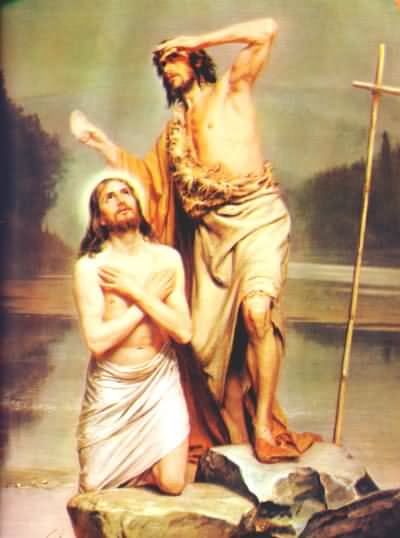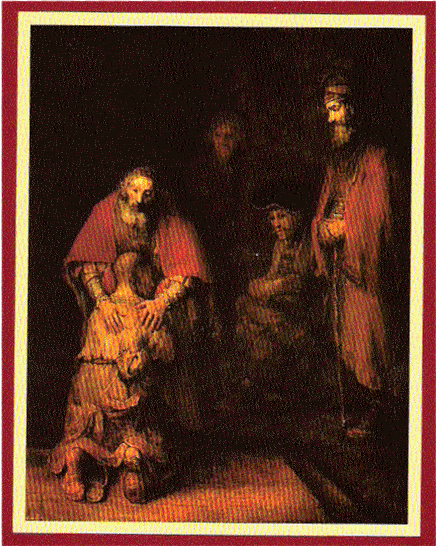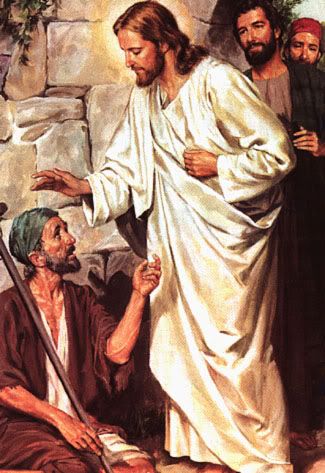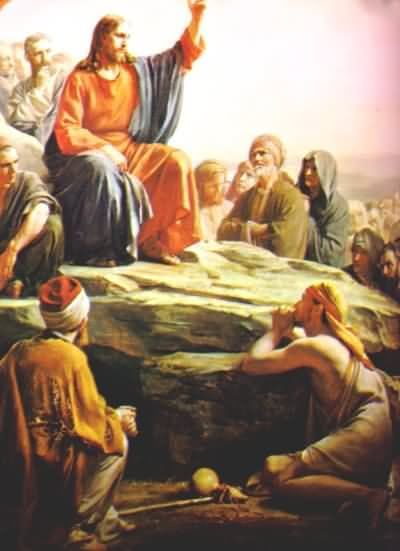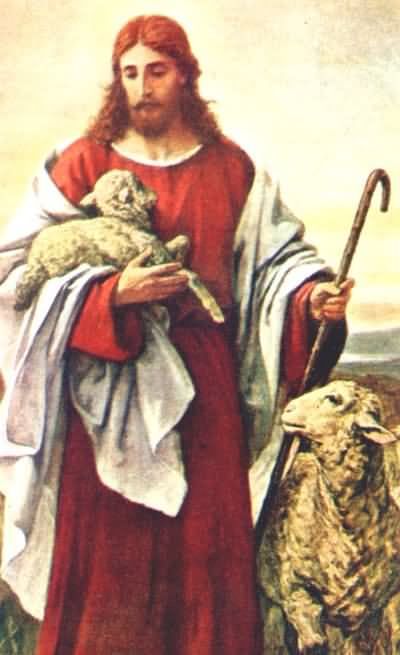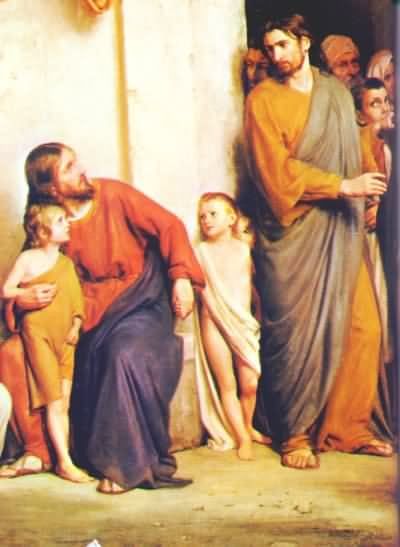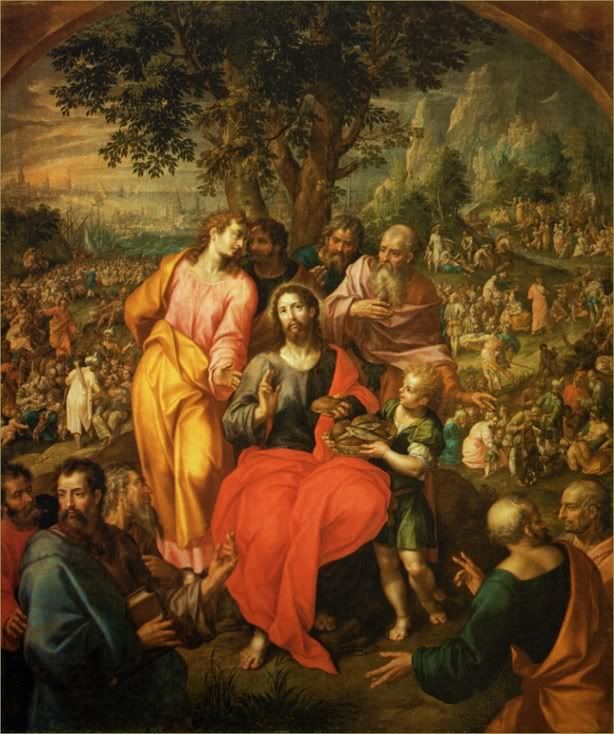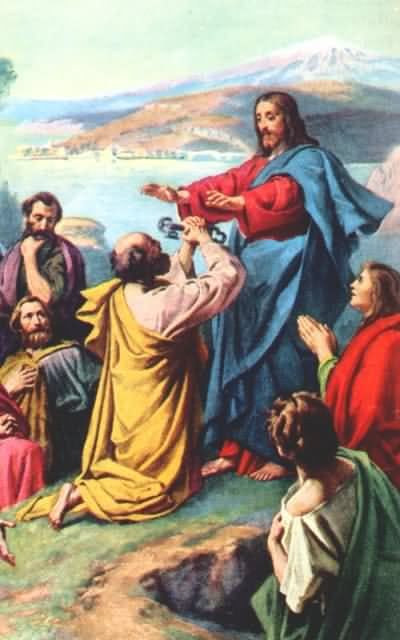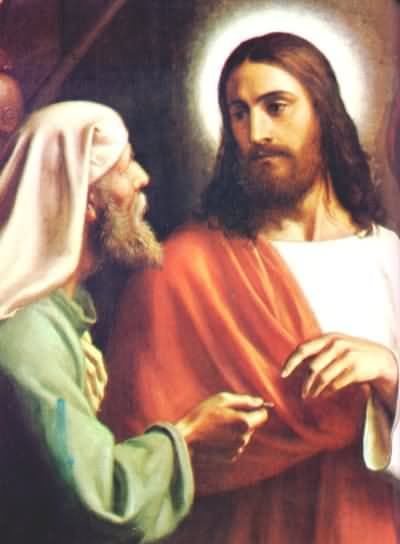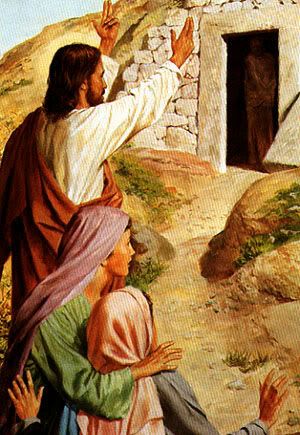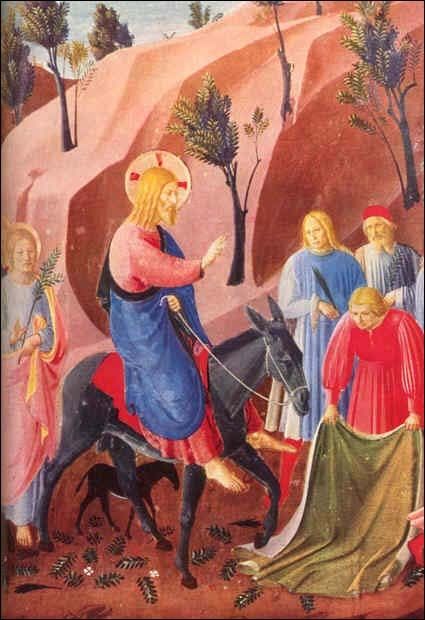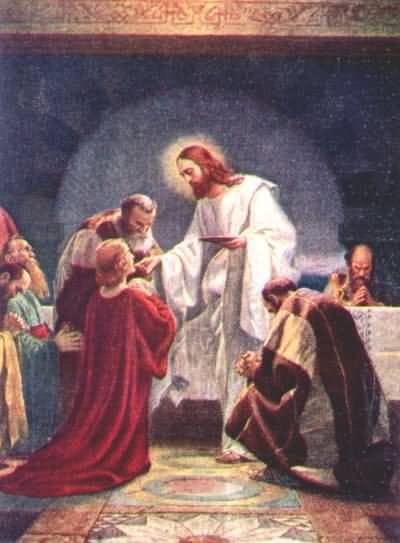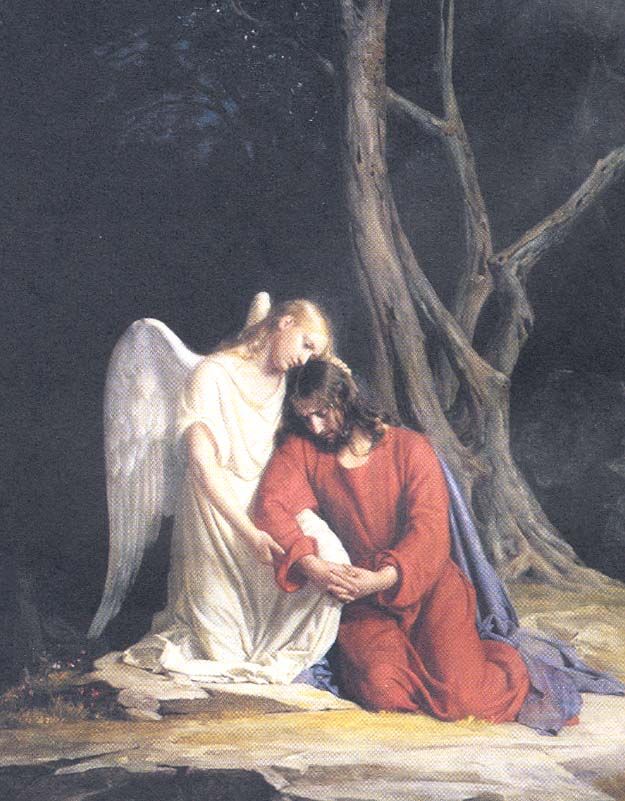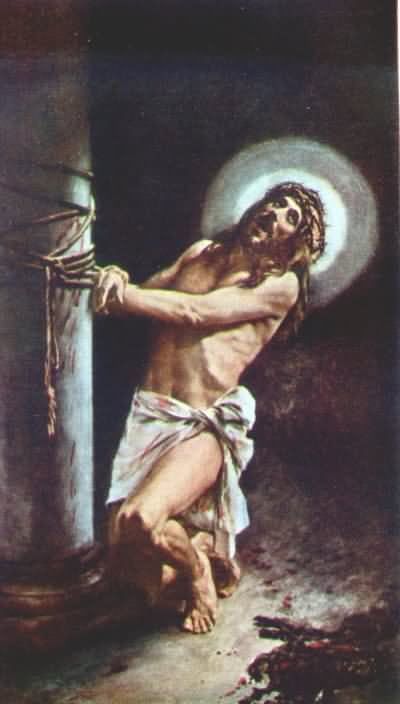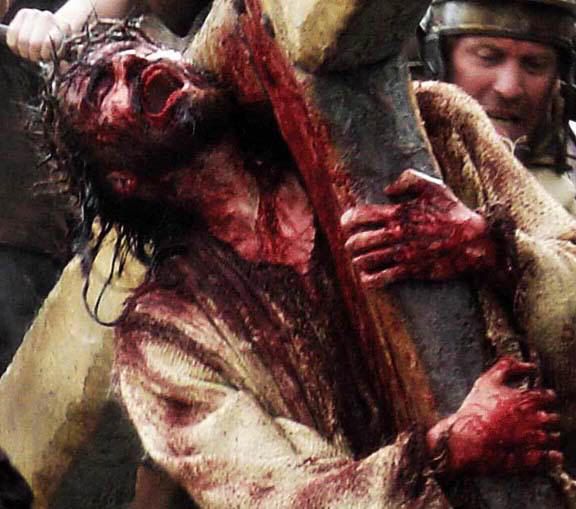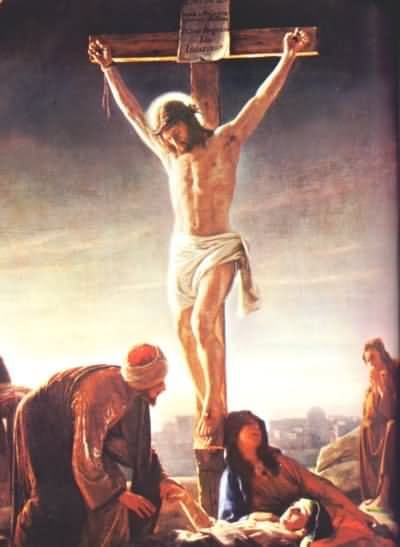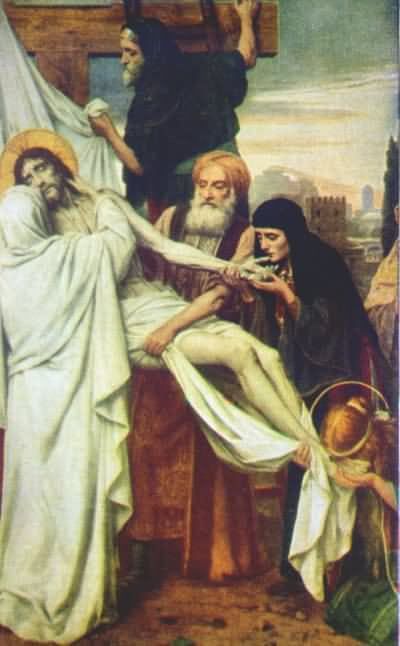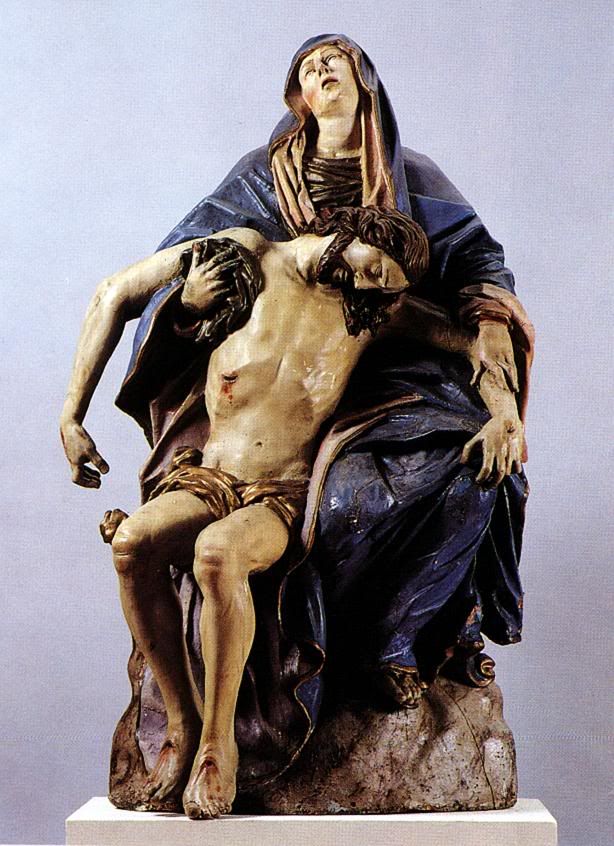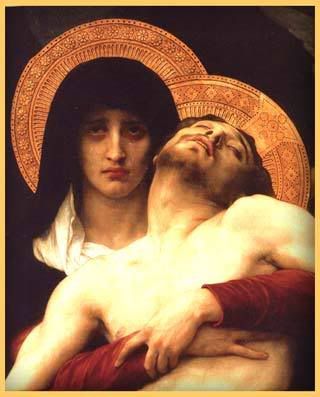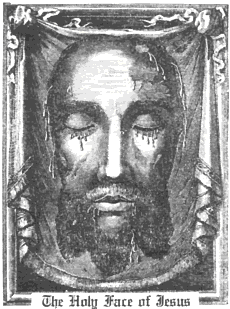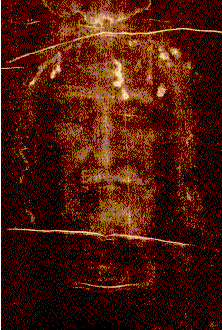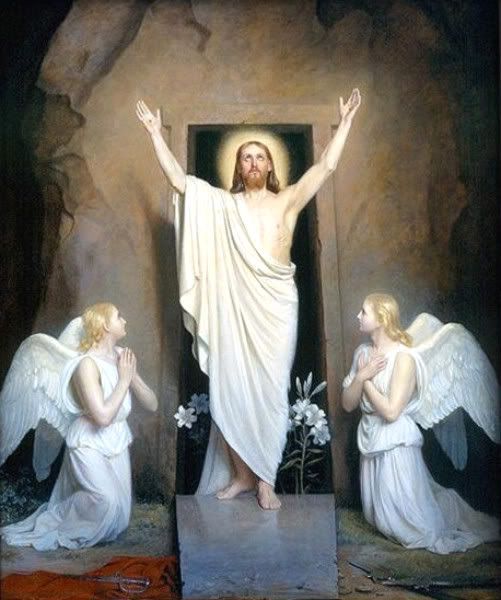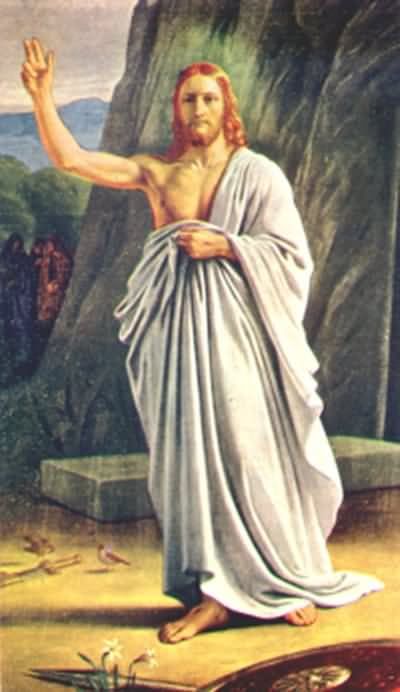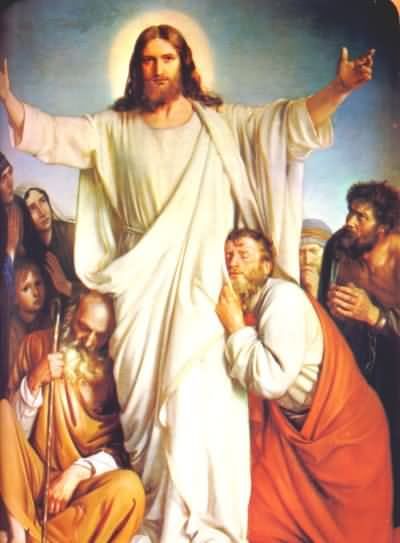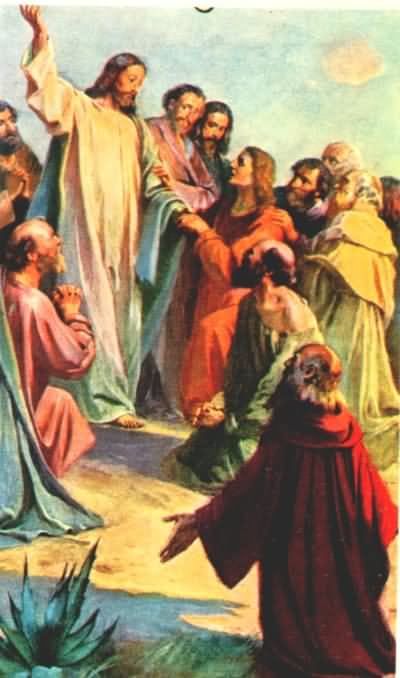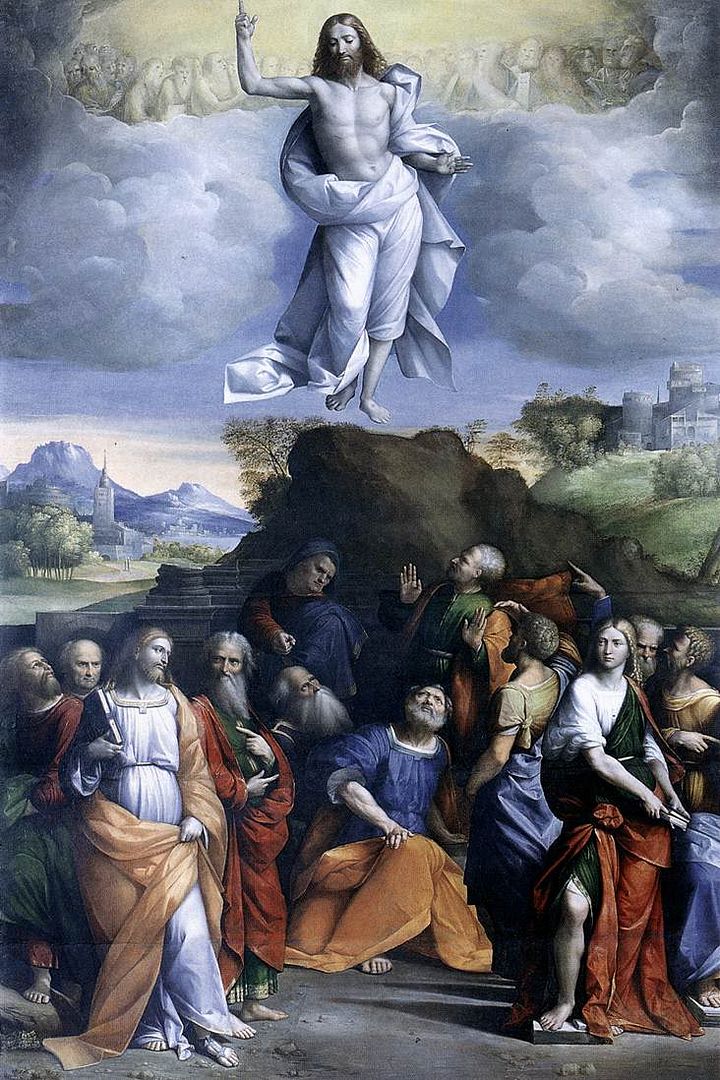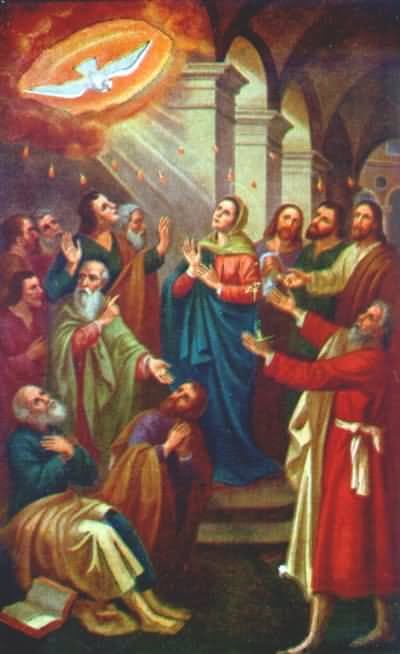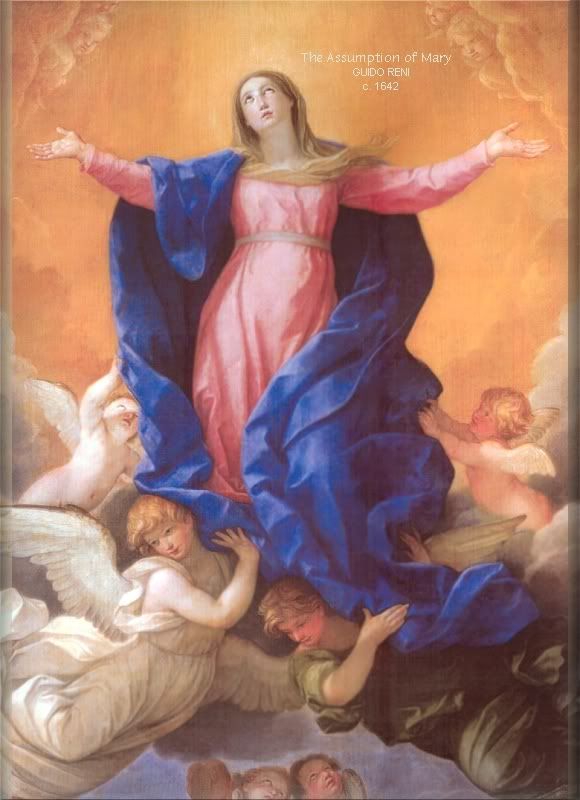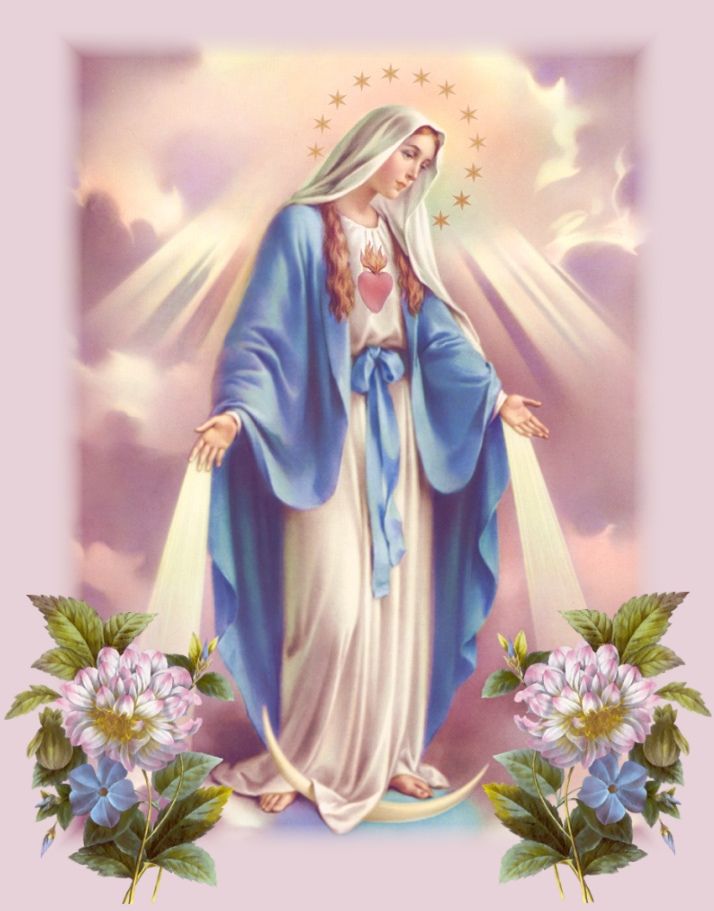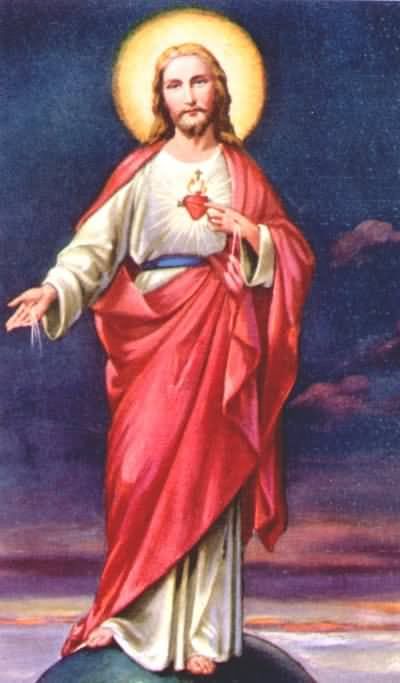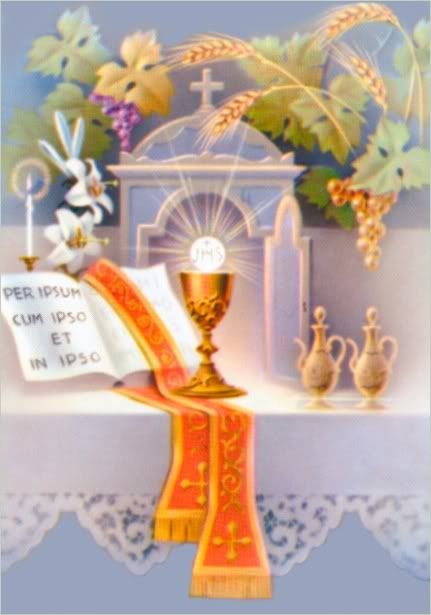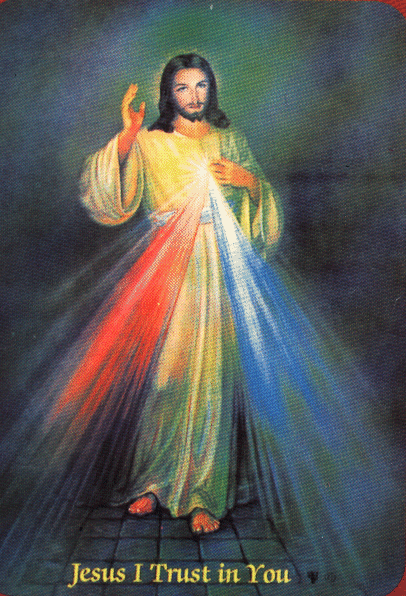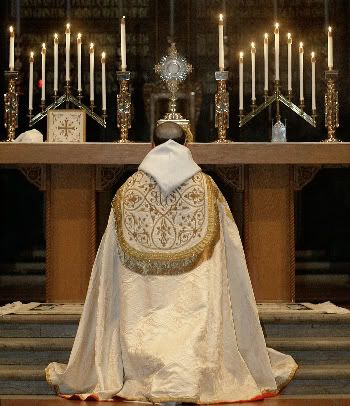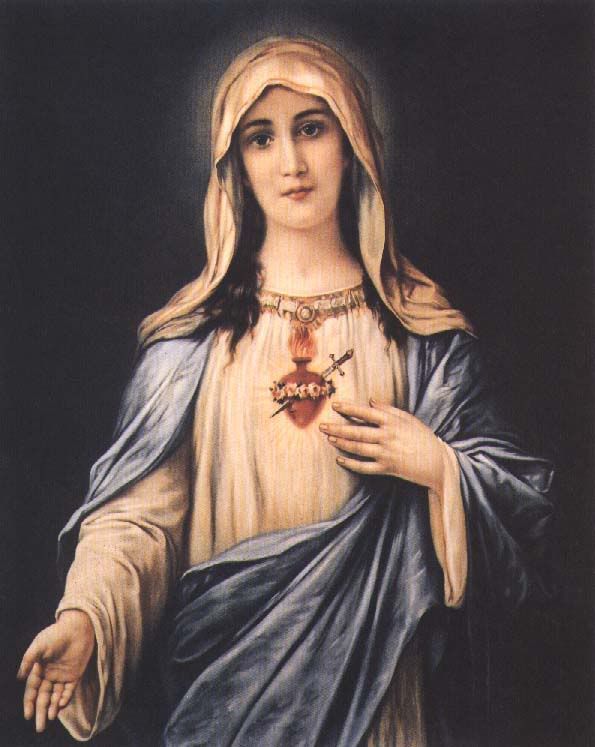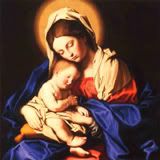Friday, December 08, 2006
Requiescat In Pace
A great generation is leaving the scene of American conservative politics. Already, President Reagan, Chief Justice Rehnquist, Governor King, Secretary Weinberger, Director Casey, Presidential Advisors Nofziger and Atwater, and guiding force Russell Kirk are gone. Add now to the roster of departed icons of the heroic age of American Conservatism former UN Ambassador Jeane Kirkpatrick. She was the most clear thinking opponent of Soviet Communism that the 1960s, 1970s, and 1980s produced. She ably represented the US at the UN, and many, including me, thought she would have made a better Secretary of State than Alexander Haig, George Schultz, or James Baker. Her book, Dictatorships and Double Standards was one fo the intellectual lynchpins of a generation, and certainly of my own understanding of the world.
Her speech at the 1984 Republican convention is one of the milestones of 20th century American political rhetoric, and very true, even today.
Jeane Kirkpatrick was a great American, and a great intellectual leader, the American Margaret Thatcher. Requiescat in pace.
Her speech at the 1984 Republican convention is one of the milestones of 20th century American political rhetoric, and very true, even today.
Jeane Kirkpatrick was a great American, and a great intellectual leader, the American Margaret Thatcher. Requiescat in pace.
Thursday, December 07, 2006
Don't Forget
Tomorrow is the Feast of the Immaculate Conception, a Holy Day of Obligation.
Hat Tip For the New Advent Wreath Banner Image
To John Cullinan, who, despite the name, is a Unitarian minister.
I really like his advent wreath, with the gold candle in the center especially striking. It might have worked even better with 5 pillars, and with gilded pinecones in the greenery, and holly not just around the center candle, but in the outer ring as well.
I was looking for 4 images of Advent Wreaths, all the same wreath and all this size, with first one candle, then two, then three, then four (and maybe a fifth one with the center candle as well) burning. But some things are meant to be sought for, and not found.
I really like his advent wreath, with the gold candle in the center especially striking. It might have worked even better with 5 pillars, and with gilded pinecones in the greenery, and holly not just around the center candle, but in the outer ring as well.
I was looking for 4 images of Advent Wreaths, all the same wreath and all this size, with first one candle, then two, then three, then four (and maybe a fifth one with the center candle as well) burning. But some things are meant to be sought for, and not found.
Saint Ambrose

Saint Ambrose's Prayer Before the Most Blessed Sacrament
O loving Lord Jesus Christ, I a sinner, presuming not on my own merits, but trusting in Thy mercy and goodness, with fear and trembling approach the table of Thy most sacred banquet. For I have defiled both my heart and body with many sins, and have not kept a strict guard over my mind and my tongue. Wherefore, O gracious God, O awful Majesty, I, awretched creature, entangled in difficulties, have recourse to Thee the fount of mercy; to Thee do I fly that I may be healed, and take refuge under Thy protection, and I ardently desire to have Him as my Saviour, whom I am unable to face as my Judge.
To Thee, O Lord, I show my wounds, to Thee I lay bare my shame. I know that my sins are many and great, on account of which I am filled with fear. But I trust in Thy mercy, of which there is no end. Look down upon me, therefore, with the eyes of Thy mercy, O Lord Jesus Christ, eternal King, God and Man, crucified for men. Hearken unto me, for my hope is in Thee; have mercy on me, who am full of misery and sin, Thou who wilt never cease to let flow the fountain of mercy.
Hail, Victim of Salvation, offered for me and for all mankind on the gibbet of the cross! Hail, Noble and Most Precious Blood, flowing from the wounds of my crucified Lord Jesus Christ and washing away all the sins of the whole world! Remember, O Lord, Thy creature, whom Thou hast redeemed by Thy Most Precious Blood.
I am grieved because I have sinned. I desire to make amends for what I have done. Take away from me therefore, O most merciful Father, all my iniquities and sins, that, being purified both in soul and body, I may worthily partake of the Holy of Holies. Grant that my reception of Thy Body and Blood, which I purpose, unworthy though I am, may bring to me pardon for my sins, the perfect cleansing of my faults, the expulsion of all evil thoughts, and the renewal of pure feelings, the health and efficacy of good works, pleasing unto Thee, and a most strong protection both in soul and body against the snares of my enemies.
Amen.
A Last Gathering Of Pearl Harbor Survivors
Sixty-five years ago today, the United States was suddenly and treacherously attacked by the Japanese Navy, while diplomatic negotiations were ongoing in Washington.
Today, about 500 survivors are expected to pay tribute to their fallen comrades at Pearl Harbor. As the youngest survivors are now in their 80s, and the meet for this reunion every 5 years, this is expected to be the last Pearl Harbor veterans reunion.
My uncle John, now dead some 20+ years, was at Hickam Field when it was attacked. Requiescat in Pace.
And if you think the vast number of World War II veterans are rapidly departing the scene, check this out on surviving veterans of World War I (my grandfather's war).

As a nation, we must never forget the damage our own lack of preparedness caused us on that day, including the loss of more than 1,100 crewmen on the USS Arizona. Today at Pearl Harbor, survivors gathered to remember, yet again.
Even with September 11, 2001 fresher in our minds, the lessons of December 7th, and the heroism and patriotism of those who died there, must never be forgotten either.
Today, about 500 survivors are expected to pay tribute to their fallen comrades at Pearl Harbor. As the youngest survivors are now in their 80s, and the meet for this reunion every 5 years, this is expected to be the last Pearl Harbor veterans reunion.
My uncle John, now dead some 20+ years, was at Hickam Field when it was attacked. Requiescat in Pace.
And if you think the vast number of World War II veterans are rapidly departing the scene, check this out on surviving veterans of World War I (my grandfather's war).

As a nation, we must never forget the damage our own lack of preparedness caused us on that day, including the loss of more than 1,100 crewmen on the USS Arizona. Today at Pearl Harbor, survivors gathered to remember, yet again.
Even with September 11, 2001 fresher in our minds, the lessons of December 7th, and the heroism and patriotism of those who died there, must never be forgotten either.
BC Going To North Carolina For A Bowl, And Coach O'Brien Apparently Is Going There To Stay
Once again, a New England team has had its head coach poached by another team as the team prepares for a bowl.
You would have thought that Bill Parcells, way back when, would have had the class to refuse to even consider any options for the next season until his New England Patriots had either won or lost their Super Bowl appearance. He didn't. His announced departure entirely disrupted the Pats' Super Bowl preparations, and they, unsurprisingly, lost.
And, it appears, BC Coach Tom O'Brien has done the same classless stunt, accepting an offer from North Carolina State while his BC Eagles are prepping for the December 30th bowl game in Charlotte.
You would have thought that Bill Parcells, way back when, would have had the class to refuse to even consider any options for the next season until his New England Patriots had either won or lost their Super Bowl appearance. He didn't. His announced departure entirely disrupted the Pats' Super Bowl preparations, and they, unsurprisingly, lost.
And, it appears, BC Coach Tom O'Brien has done the same classless stunt, accepting an offer from North Carolina State while his BC Eagles are prepping for the December 30th bowl game in Charlotte.
Wednesday, December 06, 2006
Boy Bishops

One of the fascinating end-of-the-year customs of medieval Europe was the Boy Bishop. This is an inversion ritual, and Christmas is full of them, from lords serving their tenants, to lowly members of the household turned into the official Lord of Misrule, to officers of the army waiting at table for the enlisted ranks, to luck visitors, often drawn from the lowest class, being allowed to come to the front door of the various manors in the neighborhood and demand the very best the household had to offer.
Some Anglican cathedrals have been reviving the custom. But then the Anglicans pretty much let anyone dress up and play bishop, don't they?


Now Boy Bishops (and Boy Abbots, for that matter) were not exclusively the province of St. Nicholas Day. Some held sway on the feast of the Holy Innocents, or on New Year (yes, despite the fact that the Julian Calendar was in effect in England until the 1750s, January 1st has always been recognized as New Year).
Saint Nicholas
Today is the feast of probably the most popular saint in Christendom, the patron of children, young people, pawnbrokers, and those seeking marriage, Saint Nicholas of Myra.

This is what The Golden Legend has to say about him.
The Saint Nicholas Center has everything you could possibly want to know about Good Saint Nicholas.
And Wilson's Almanac has a great deal of good stuff, too.

On the surface, the modern Dutch Sinterclaas looks more like the original bishop of Myra. That despite the fact that the Dutch are perhaps the most post-Christian culture in Europe

Thomas Nast's 19th century American rendition.

Twentieth Century American artist Haddon Sundblom, working for the Coca Cola Company, helped establish the modern image of Saint Nicholas, or Santa Claus.


As did that of his contemporary, Norman Rockwell, and his Saturday Evening Post covers.
Efforts are made from time to time to update Saint Nicholas' garb and image, but they are rejected by children themselves. Ironically, the young are the ones who insist that Santa looks like this, and nothing else. You can put black boots on him, rather than brown (but they have to be the same style). You can put a strip of white fur down the front of his coat. Sometimes he can wear a harness with sleigh bells. And you can give him green mittens. But changes beyond that are rejected by children out of hand as unbecoming to Jolly Old Saint Nicholas.
Maybe Nast's/Sundblom's/Rockwell's vision has so much staying power because it is anchored in tradition. The red and white coat is an adaptation of a bishop's robes.

This is what The Golden Legend has to say about him.
The Saint Nicholas Center has everything you could possibly want to know about Good Saint Nicholas.
And Wilson's Almanac has a great deal of good stuff, too.

On the surface, the modern Dutch Sinterclaas looks more like the original bishop of Myra. That despite the fact that the Dutch are perhaps the most post-Christian culture in Europe

Thomas Nast's 19th century American rendition.

Twentieth Century American artist Haddon Sundblom, working for the Coca Cola Company, helped establish the modern image of Saint Nicholas, or Santa Claus.


As did that of his contemporary, Norman Rockwell, and his Saturday Evening Post covers.
Efforts are made from time to time to update Saint Nicholas' garb and image, but they are rejected by children themselves. Ironically, the young are the ones who insist that Santa looks like this, and nothing else. You can put black boots on him, rather than brown (but they have to be the same style). You can put a strip of white fur down the front of his coat. Sometimes he can wear a harness with sleigh bells. And you can give him green mittens. But changes beyond that are rejected by children out of hand as unbecoming to Jolly Old Saint Nicholas.
Maybe Nast's/Sundblom's/Rockwell's vision has so much staying power because it is anchored in tradition. The red and white coat is an adaptation of a bishop's robes.
Monday, December 04, 2006
Art of the della Robbias
The Italian Rennaissance was blessed by the artistic talents of a family of Florentine scultors, whose principal (but not exclusive) medium was glazed terra cotta. Luca, Andrea, Matteo, and Giovanni (am I leaving anyone out?) della Robbia collectively produced some of the finest sacred art of the period. Yet I fear that they are not the household names they ought to be. I have seen their work in person at both the Boston Museum of Fine Arts, and at the Isabella Stewart Gardner Museum.
Here is a little sampling.








They produced a lot more than this, including the Ascension image that pops up here every Rogationtide. Learn more about this outstanding family of artists, who contributed to our Catholic cultural heritage.
Here is a little sampling.








They produced a lot more than this, including the Ascension image that pops up here every Rogationtide. Learn more about this outstanding family of artists, who contributed to our Catholic cultural heritage.
Sunday, December 03, 2006
This Looks Like It Could Be Very Good
Sad News
Advent Resources
The original Recta Ratio Yahoo Group has a good File on Advent Prayers, including blessing the Advent Wreath, the Christmas Tree, and the Creche, lighting ceremony prayers for all 4 Sundays of Advent, the "O" Antiphons and how to pray them, and the Rorate Caeli.
Also I should point out the myriad of Christmas cookie recipes, and Christmas candy recipes, as well as the lyrics to a vast number of Advent and Christmas songs, all in the files of the original Recta Ratio Yahoo Group.
Also I should point out the myriad of Christmas cookie recipes, and Christmas candy recipes, as well as the lyrics to a vast number of Advent and Christmas songs, all in the files of the original Recta Ratio Yahoo Group.
The Christmas Stagecoach
Long one of my favorite themes at this time of the year, the English Christmas stagecoach once regularly adorned Christmas cards, though it is hard to find today.
Why a stagecoach? Well, Washington Iriving in his Bracebridge Hall stories lovingly decribes the progress of a coach filled with his narrator and other Christmas travellers on the day before Christmas. Caldecott and Rockwell took up Irving's description, and the Christmas stagecoach became an icon of the Christmas Season.


Why a stagecoach? Well, Washington Iriving in his Bracebridge Hall stories lovingly decribes the progress of a coach filled with his narrator and other Christmas travellers on the day before Christmas. Caldecott and Rockwell took up Irving's description, and the Christmas stagecoach became an icon of the Christmas Season.

In the course of a December tour in Yorkshire, I rode for a long distance in one of the public coaches, on the day preceding Christmas. The coach was crowded, both inside and out, with passengers, who, by their talk, seemed principally bound to the mansions of relations or friends, to eat the Christmas dinner. It was loaded also with hampers of game, and baskets and boxes of delicacies; and hares hung dangling their long ears about the coachman's box, presents from distant friends for the impending feast. I had three fine rosy-cheeked boys for my fellow-passengers inside, full of the buxom health and manly spirit which I have observed in the children of this country.....

I could not but notice the more than ordinary air of bustle and importance of the coachman, who wore his hat a little on one side, and had a large bunch of Christmas greens stuck in the buttonhole of his coat. He is always a personage full of mighty care and business, but he is particularly so during this season, having so many commissions to execute in consequence of the great interchange of presents. And here, perhaps, it may not be unacceptable to my untravelled readers, to have a sketch that may serve as a general representation of this very numerous and important class of functionaries, who have a dress, a manner, a language, an air, peculiar to themselves, and prevalent throughout the fraternity; so that, wherever an English stage coachman may be seen, he cannot be mistaken for one of any other craft or mystery.
He has commonly a broad, full face, curiously mottled with red, as if the blood had been forced by hard feeding into every vessel of the skin; he is swelled into jolly dimensions by frequent potations of malt liquors, and his bulk is still further increased by a multiplicity of coats, in which he is buried like a cauliflower, the upper one reaching to his heels. He wears a broad-brimmed, low-crowned hat; a huge roll of colored handkerchief about his neck, knowingly knotted and tucked in at the bosom; and has in summer time a large bouquet of flowers in his button-hole; the present, most probably, of some enamored country lass. His waistcoat is commonly of some bright color, striped, and his small clothes extend far below the knees, to meet a pair of jockey boots which reach about half way up his legs.
All this costume is maintained with much precision; he has a pride in having his clothes of excellent materials; and, notwithstanding the seeming grossness of his appearance, there is still discernible that neatness and propriety of person, which is almost inherent in an Englishman. He enjoys great consequence and consideration along the road; has frequent conferences with the village housewives, who look upon him as a man of great trust and dependence; and he seems to have a good understanding with every bright-eyed country lass. The moment he arrives where the horses are to be changed, he throws down the reins with something of an air, and abandons the cattle to the care of the hostler; his duty being merely to drive from one stage to another. When off the box, his hands are thrust into the pockets of his great coat, and he rolls about the inn yard with an air of the most absolute lordliness. Here he is generally surrounded by an admiring throng of hostlers, stable-boys, shoeblacks, and those nameless hangers-on, that infest inns and taverns, and run errands, and do all kind of odd jobs, for the privilege of battening on the drippings of the kitchen and the leakage of the tap-room. These all look up to him as to an oracle; treasure up his cant phrases; echo his opinions about horses and other topics of jockey lore; and, above all, endeavor to imitate his air and carriage. Every ragamuffin that has a coat to his back, thrusts his hands in the pockets, rolls in his gait, talks slang, and is an embryo Coachey....
A stage coach, however, carries animation always with it, and puts the world in motion as it whirls along. The horn, sounded at the entrance of a village, produces a general bustle. Some hasten forth to meet friends; some with bundles and band-boxes to secure places, and in the hurry of the moment can hardly take leave of the group that accompanies them. In the meantime, the coachman has a world of small commissions to execute. Sometimes he delivers a hare or pheasant; sometimes jerks a small parcel or newspaper to the door of a public house; and sometimes, with knowing leer and words of sly import, hands to some half-blushing, half-laughing housemaid an odd-shaped billet-doux from some rustic admirer. As the coach rattles through the village, every one runs to the window, and you have glances on every side of fresh country faces and blooming giggling girls. At the corners are assembled juntos of village idlers and wise men, who take their stations there for the important purpose of seeing company pass; but the sagest knot is generally at the blacksmith's, to whom the passing of the coach is an event fruitful of much speculation. The smith, with the horse's heel in his lap, pauses as the vehicle whirls by; the cyclops round the anvil suspend their ringing hammers, and suffer the iron to grow cool; and the sooty spectre, in brown paper cap, laboring at the bellows, leans on the handle for a moment, and permits the asthmatic engine to heave a long-drawn sigh, while he glares through the murky smoke and sulphureous gleams of the smithy.
First Sunday of Advent

Station Church: Saint Mary Major
From The Liturgical Year, by Abbot Prosper Gueranger, OSB:
THIS Sunday, the first of the ecclesiastical year, is called, in the chronicles and charts of the middle ages, Ad te levavi Sunday, from
the first words of the Introit; or, Aspiciens a longe, from the first words of one of the responsories of Matins.
The Station {The Stations marked in the Roman missal for certain days in the year, were formerly processions, in which the whole clergy and people went to some given church, and there celebrated the Office and Mass. This usage, which dates from the earliest period of the Roman Church, and of which St. Gregory the Great was but the restorer, still exists, at least in a measure; for the Stations are still observed, though with less solemnity and concourse of people, or, all the days specified in the missal.} is at St. Mary Major's. It is under the auspices of Mary---in the splendid basilica which possesses the crib of Bethlehem, and is therefore called, in ancient documents, St. Mary's ad Præsepe that the Roman Church, recommences, each year, the sacred cycle. It would have been impossible to select a place more suitable than this for saluting the approach of the divine birth, which is to gladden heaven and earth, and manifest the sublime portent of a Virgin Mother. Let us go in spirit to this august temple, and unite in the prayers which are there being offered up: they are the very ones we also use, and which we will now explain.
In the night Office, the Church commences the reading of the Book of Isaias, who, of all the Prophets, has the most distinctly and explicitly foretold the Messias; and she continues this same Book until Christmas day inclusively. Let us strive to enter into the teaching of the holy prophet, and let the eye of our faith affectionately recognize the promised Saviour in the descriptions, sometimes consoling and sometimes terrifying, under which Isaias depicts Him.
The Saviour, then, who is coming to us is the clothing which we are to put on over our spiritual nakedness. Here let us admire the goodness of our God, who, remembering that man hid himself after his sin, because he was naked, vouchsafes Himself to become man's clothing, and to cover with the robe of His Divinity the misery of human nature. Let us, therefore, be on the watch for the day and the hour when He will come to us, and take precautions against the drowsiness which comes of custom and self-indulgence. The light will soon appear; may its first rays be witness of our innocence, or at least of our repentance. If our Saviour is coming to put over our sins a covering which is to hide them for ever, the least that we, on our part, can do, is to retain no further affection for those sins, else it will be said of us that we refused our salvation. The last words of this Epistle are those which caught the eye of St. Augustine, when, after a long resistance to the grace which pressed him to give himself to God, he resolved to obey the voice which said to him: `Tolle lege; take and read.' They decided his conversion; he immediately resolved to abandon the worldly life he had hitherto led, and to put on Christ Jesus. Let us begin this very day, and imitate this saint. Let us long for that dear and glorious clothing with which the mercy of our heavenly Father is so soon to cover us; and let us say with the Church these touching words, which we cannot repeat too often during this time of the year ...
Thou art to come, then, O Jesus, in all the terror of the last judgement, and when men least expect Thee. In a few days Thou art coming to us to clothe our misery with the garment of Thy mercy; a garment of glory and immortality to us; but Thou art to come again on a future day, and in such dread majesty that men will wither away with fear. O my Saviour! condemn me not on that day of the world's destruction. Visit me now in Thy love and mercy; I am resolved to prepare my soul. I desire that Thou shouldst come and be born within me, so that when the convulsions of nature warn me of Thy coming to judge me, I may lift up my head, as Thou biddest Thy faithful disciples do, who, when the rest of men shall tremble at the thunder of Thy judgement, will have confidence in Thee, because they have Thee in their hearts.



